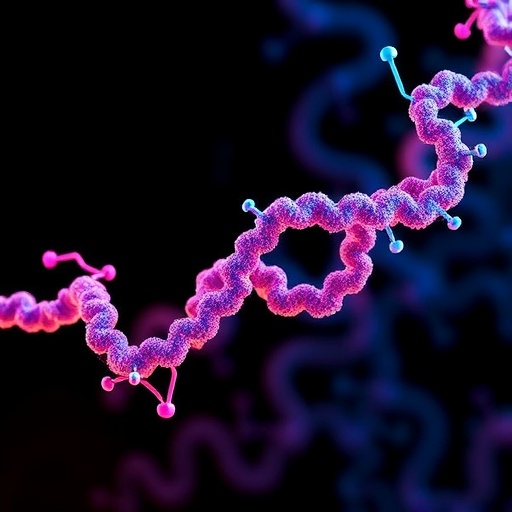In recent years, the field of single-cell biology has witnessed groundbreaking advancements, particularly in understanding the complex interplay of proteins within individual cells. This granularity is crucial for elucidating biological mechanisms that govern cellular processes and the progression of various diseases. A central challenge, however, remains in accurately measuring protein abundance at the single-cell level. Traditional single-cell proteomic techniques have presented a myriad of obstacles, including limited coverage, low throughput, inconsistent sensitivity, and significant batch effects. Combined with the high cost and intricate nature of experimental protocols, these limitations have hampered the broader application of single-cell proteomics in clinical and research settings.
In addressing these challenges, researchers have conceptualized innovative approaches that marry modern computational techniques with traditional biological principles. One such noteworthy advancement is the development of scTranslator, a pre-trained generative model specifically designed to infer the proteomic profiles of single cells based on their corresponding transcriptomic data. This novel model draws its inspiration from the fields of natural language processing—a discipline that has made significant strides with the advent of deep learning—and the foundational concepts of the genetic central dogma which connects DNA, RNA, and protein synthesis.
scTranslator effectively functions as a bridge, translating the complexities of transcriptome data into a more comprehensive view of proteomic profiles. By leveraging powerful generative modeling techniques, scTranslator can predict the abundance of proteins within single cells with remarkable accuracy. This capability not only addresses the immediate limitations of current single-cell proteomic technologies but also opens new avenues for understanding how variations in transcript abundance can influence protein expression and, subsequently, cellular functionality.
To validate the model’s performance, the research team conducted extensive benchmarking across multiple diverse datasets. The evaluations involved various single-cell profiling techniques including CITE-seq, spatial CITE-seq, REAP-seq, and NEAT-seq, encompassing a wide range of cell types and tissues. The results indicated that scTranslator maintains high stability and flexibility, effectively generalizing across different biological contexts, such as infectious diseases, metabolic disorders, and various oncologic conditions. This adaptability is particularly significant, given the heterogeneity observed in cellular responses to disease and treatment.
One of the standout features of scTranslator is its ability to assist in downstream analyses. The model’s predictions serve as a foundational tool for a variety of applications within the field. For instance, researchers can utilize scTranslator’s data to enhance gene/protein interaction inference, enabling a deeper understanding of cellular signaling pathways and regulatory mechanisms. Perturbation predictions can also be made more reliable, allowing scientists to forecast how modifications in gene expression may impact protein levels and cellular behavior.
Additionally, scTranslator supports sophisticated clustering algorithms, facilitating the identification of unique cellular subpopulations within heterogeneous tissues. This clustering capability is critical for advancing cancer research, where tumor heterogeneity complicates treatment approaches. By recognizing distinct cellular origins and states, scTranslator empowers researchers to tailor therapeutic strategies that are more aligned with the biological realities of tumors.
In the realm of batch effect correction, scTranslator demonstrates superior efficacy, mitigating one of the most prevalent sources of variability in single-cell studies. By improving the quality and consistency of proteomic data, the model fosters more reliable comparisons across studies and patient samples, ultimately aiding in the standardization of experimental protocols in single-cell proteomics.
Moreover, scTranslator makes strides in addressing the urgent need for versatile analytical tools in the biomedical research landscape. By integrating proteomic predictions with transcriptomic context, researchers can derive holistic insights into cell biology that were previously unattainable. The implications of this technology stretch far beyond basic science; they encompass the realms of personalized medicine and targeted therapies, promising a future where treatment strategies are informed by a comprehensive understanding of an individual’s cellular makeup.
As the application of scTranslator expands, it is poised to reshape the landscape of single-cell research. By providing a robust framework for deriving proteomic profiles from transcriptomic data, this model is enabling scientists to confront long-standing challenges in cell biology and disease research. The ability to predict protein abundance at the single-cell level not only enhances the accuracy of cellular characterizations but also allows for more nuanced investigations into dynamic biological processes.
In summary, scTranslator stands as a testament to the power of interdisciplinary research, bridging the gap between computational models and biological inquiry. The transformative potential of this innovative model ushers in a new era of single-cell analysis, where the richness of multi-omics data can be harnessed to unlock the complexities of life sciences. As ongoing studies continue to validate and refine this technology, the scientific community eagerly anticipates the new discoveries that lie ahead, catalyzed by the capabilities of scTranslator.
Strong implications arise from emerging technologies that enhance our understanding of single cells, particularly in the realm of precision medicine. As we delve deeper into the genotypic and phenotypic variations that define cellular identities, tools like scTranslator will be invaluable for the advancement of personalized healthcare interventions. The journey toward individualized treatment regimens will profit immensely from the increased resolution afforded by sophisticated computational models such as scTranslator.
Ultimately, as researchers continue to dissect the intricate tapestry of life at the single-cell level, scTranslator exemplifies the convergence of technology and biology. Its emergence not only represents a significant advancement in our methodological toolkit but also signals a paradigm shift in the way we investigate and understand the cellular underpinnings of disease and human health.
Subject of Research: Single-cell transcriptomes to proteomes translation
Article Title: A pre-trained large generative model for translating single-cell transcriptomes to proteomes
Article References: Liu, L., Li, W., Wang, F. et al. A pre-trained large generative model for translating single-cell transcriptomes to proteomes. Nat. Biomed. Eng (2025). https://doi.org/10.1038/s41551-025-01528-z
Image Credits: AI Generated
DOI: https://doi.org/10.1038/s41551-025-01528-z
Keywords: single-cell proteomics, generative models, transcriptomics, scTranslator, biomedical engineering, precision medicine, cell biology, protein abundance, cancer research.




